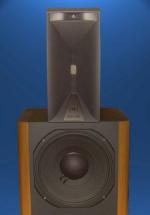
Originally Posted by
jfine

4313b Thanks for explaining the mid and high circuits as well. Very helpful.
Is it safe to say that in addition to providing a flatter impedance load, the 36 uf (+ inductor + resistors I suppose) is also "tuning" the circuit? Or is that just an artifact (happy accident) of the single purpose of providing a flatter impedance load?
For example if I swap in a polypropylene cap in place of the electrolytic 36, not only does the tightness of the bass change, it also affects/attenuates certain frequencies below the cutoff point differently than the original cap. I realize I'm talking 2 different cap designs, but it does affect this circuit nonetheless besides impedance loading.
This LF filter network seems very complex, and the interaction between the inductor, cap, and resistor, seems to change if 1 of those components is altered. Not sure swapping the cap for polypropylene would be smart because of the lateral effects.
The fact that the 150A omitted it altogether is puzzling. So by removing the cap from the 150A, was the flatter load compromised for the sake of sonics? I can't think of another reason. I think the L96, L112 and L150A does not contain any NPE's, so must be.
On a side note, raising the slope for the MF-HF on the 150A, I wonder if they did that to help protect the tweeter from possible high wattage leaking thru. One set of L150's I have the 033's were blown and the associated lpad looked fried inside.




 Reply With Quote
Reply With Quote





 too much 60's/70's R&R I guess.
too much 60's/70's R&R I guess.
